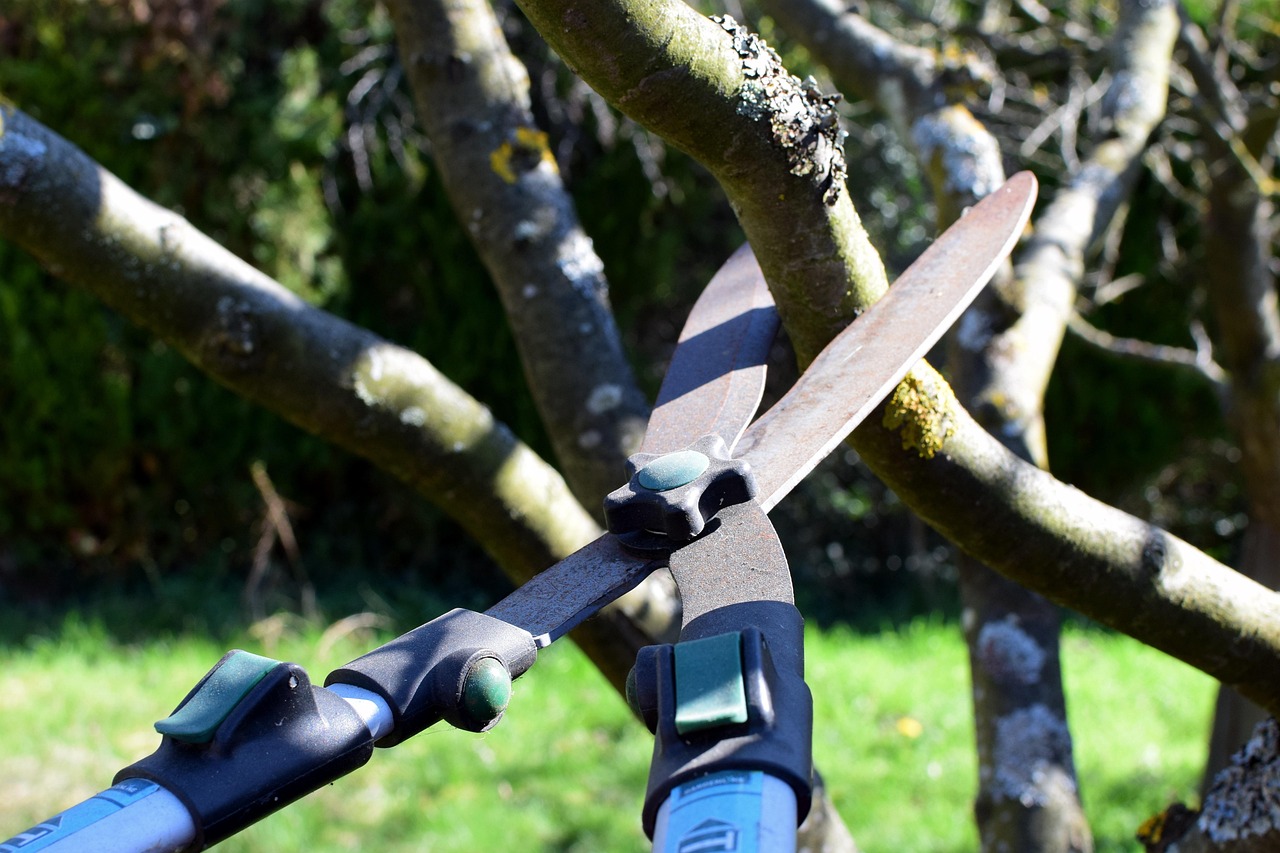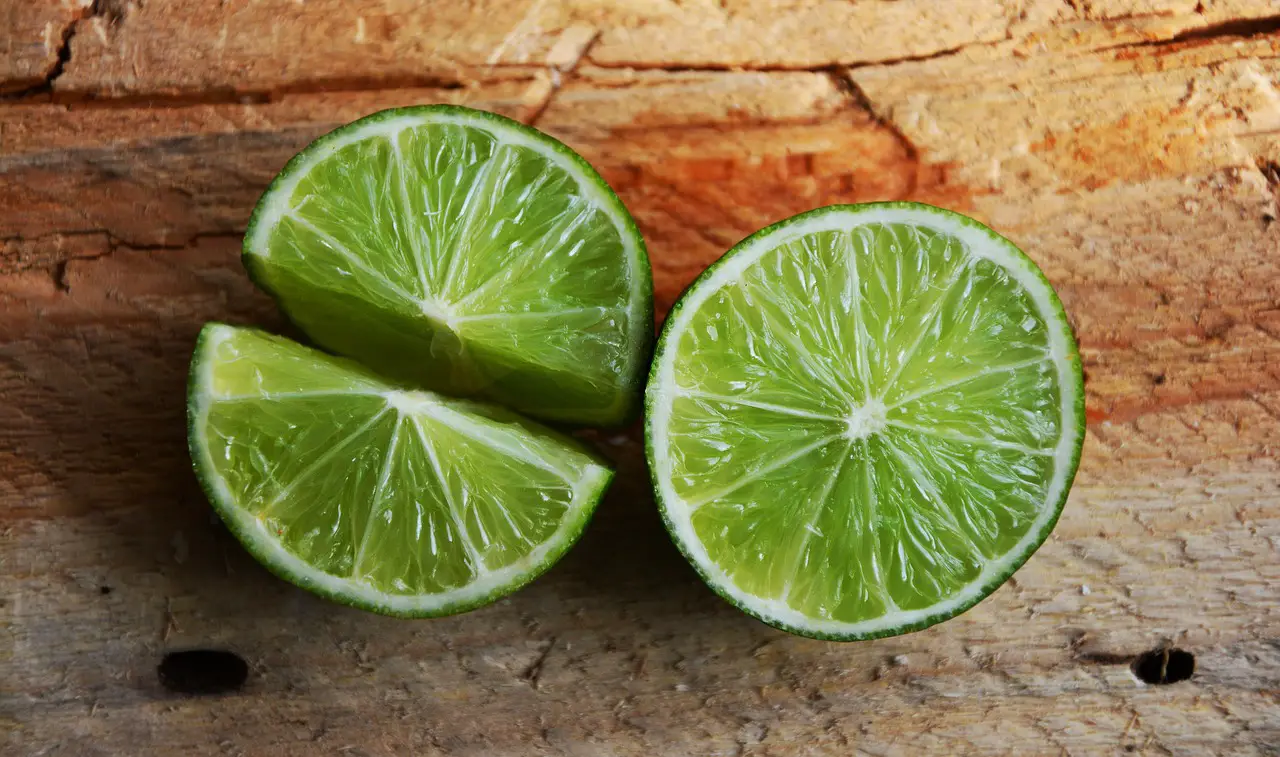Citrus tree pruning is essential for maximizing fruit yield. Proper techniques help improve sunlight exposure, air circulation, and overall tree health. Regular pruning also encourages new growth and fruiting, leading to a more productive tree.
Citrus trees, including oranges, lemons, limes, and grapefruits, are popular for their delicious fruits and fragrant blossoms. Pruning is a vital part of citrus tree care. It helps maintain the tree’s shape, promotes healthy growth, and ultimately increases fruit production. Understanding when and how to prune is crucial for successful cultivation.

Different citrus varieties may have specific pruning needs. However, the general principles of pruning apply to all citrus trees. Regular pruning not only enhances fruit yield but also helps prevent diseases and pests that can damage the tree. Additionally, it allows better access to sunlight and air, which are essential for photosynthesis and overall vitality.
Understanding the Basics of Citrus Tree Pruning
Before diving into the specifics of pruning techniques, it’s important to grasp some fundamental concepts. Pruning involves removing certain parts of a plant to encourage healthier growth. For citrus trees, this means cutting away dead or diseased branches, thinning out overcrowded areas, and shaping the tree for optimal growth.
Here are key benefits of pruning citrus trees:

- Improved Air Circulation: Thinning the canopy allows air to circulate, reducing the risk of fungal diseases.
- Enhanced Sunlight Exposure: Removing excess branches ensures that all parts of the tree receive adequate sunlight.
- Increased Fruit Production: Pruning encourages new growth and fruit-bearing branches.
- Healthier Trees: Regular maintenance can prevent disease and pest infestations.
Pruning should be done at the right time of year. Early spring is generally the best season for most citrus trees. During this time, the trees are just starting their growing season. This timing helps minimize stress on the tree and encourages robust growth following pruning.
Essential Tools for Pruning Citrus Trees
Having the right tools is crucial for effective pruning. Using sharp and clean tools ensures precise cuts, which helps prevent injury to the tree. Here are some essential tools every citrus grower should have:
- Hand Pruners: Ideal for small branches and delicate cuts.
- Loppers: Suitable for thicker branches that need more leverage.
- Pruning Saw: Useful for larger branches that cannot be managed with pruners or loppers.
- Gloves: Protect your hands while working with thorny branches.
- Safety Glasses: Shield your eyes from falling debris.
Key Pruning Techniques for Citrus Trees
Understanding different pruning techniques can significantly impact the yield of your citrus trees. Here are some methods to consider:

- Thinning: This involves removing some branches to allow more light into the center of the tree. Thinning promotes better air circulation and sunlight exposure.
- Heading Back: This technique involves cutting back the tips of branches to encourage bushier growth. It can help shape the tree and control its height.
- Crown Reduction: This method reduces the size of the tree’s canopy without removing the entire tree. It is useful for managing space in smaller gardens.
- Suckering: Removing suckers—those unwanted shoots that grow from the base or roots of the tree—helps redirect energy towards fruit production.
Each technique serves a specific purpose in enhancing the health and productivity of citrus trees. When applied correctly, these methods help ensure a bountiful harvest each season.
| Pruning Technique | Description | Best Time to Apply |
|---|---|---|
| Thinning | Removes branches to enhance light penetration. | Early Spring |
| Heading Back | Cuts tips of branches for bushier growth. | Early Spring |
| Crown Reduction | Reduces canopy size while maintaining structure. | Late Winter to Early Spring |
| Suckering | Removes unwanted shoots from base or roots. | Throughout Growing Season |
Pruning citrus trees may seem intimidating at first, but with practice and understanding, it becomes a valuable skill. By mastering these techniques and principles, you will enhance your ability to grow healthy, fruitful citrus trees. In the following sections, we will delve deeper into specific pruning strategies tailored to different types of citrus trees and common mistakes to avoid during the process.
Pruning Techniques for Different Citrus Varieties
Each citrus variety has unique characteristics that may require specific pruning techniques. Understanding these differences can help you tailor your pruning approach for optimal results. Below are discussions on the most commonly grown citrus varieties and their pruning needs.

Orange Trees
Orange trees are among the most popular citrus trees. They typically require regular maintenance to ensure they produce a bountiful harvest. Pruning should focus on:
- Removing Dead or Diseased Wood: This helps prevent disease and encourages healthy growth.
- Thinning: To allow sunlight to penetrate the canopy, which is vital for fruit development.
- Shaping: Maintain a balanced structure that can support heavy fruit loads.
The best time to prune orange trees is just before the growing season begins, typically in early spring. This timing helps minimize stress while maximizing new growth.
Lemon Trees
Lemon trees can be quite vigorous and may require more frequent pruning than other citrus varieties. Important considerations include:
- Controlling Size: Regular pruning helps manage the tree’s height and spread, especially if grown in confined spaces.
- Encouraging Airflow: Thinning branches enhances air circulation, reducing the risk of fungal diseases.
- Cutting Back Overgrowth: This promotes more fruitful growth by redirecting energy to productive branches.
Lemon trees benefit from pruning during late winter or early spring when they are still dormant but before new growth starts.
Lime Trees
Lime trees are generally smaller and can be pruned similarly to lemon trees. Key pruning strategies include:
- Removing Suckers: These can sap energy from fruit-bearing branches and should be regularly cut back.
- Thinning Out: Focus on removing crowded branches to promote better fruiting and air circulation.
- Adjusting Shape: Maintain a manageable height and width to facilitate harvesting.
The ideal time for pruning lime trees is just before the growing season, similar to that of lemons and oranges.
Grapefruit Trees
Grapefruit trees can grow quite large, requiring diligent pruning to maintain shape and productivity. Consider these techniques:
- Removing Weak or Crossed Branches: This practice enhances sunlight access and airflow.
- Crown Thinning: This allows for better light penetration into the middle of the tree.
- Shaping: Keeping the tree’s structure balanced can help support heavy fruit loads.
Pruning grapefruit trees is best done in early spring. This ensures the tree is poised for vigorous growth as warmer weather approaches.
Common Pruning Mistakes to Avoid
Even seasoned gardeners can make mistakes while pruning citrus trees. Being aware of these common errors can help improve your technique and overall tree health. Here are some pitfalls to avoid:
- Over-Pruning: Cutting too much can stress the tree and reduce fruit production. Aim for moderation.
- Poor Timing: Pruning at the wrong time can expose the tree to cold temperatures or inhibit growth. Stick to early spring for most varieties.
- Using Dull Tools: Dull tools can cause jagged cuts that may harm the tree. Always ensure your tools are sharp and clean.
- Ineffective Cuts: Making cuts in the wrong place can lead to weak branches or disease entry points. Study proper cutting techniques before you begin.
The Role of Fertilization Post-Pruning
After pruning, fertilization plays a crucial role in helping citrus trees recover and thrive. Proper fertilization provides essential nutrients that support new growth and increase fruit yield. Here are some key points about fertilizing after pruning:
- Nitrogen-Rich Fertilizers: These are particularly beneficial after pruning, as they promote leafy growth.
- Timing of Fertilization: Apply fertilizer shortly after pruning to give the tree a nutrient boost at the start of its growing season.
- Watering After Fertilization: Ensure you water the tree after applying fertilizer to help distribute nutrients evenly through the soil.
A well-fertilized citrus tree is more resilient against pests and diseases, leading to a higher fruit yield over time. Understanding how to integrate fertilization with your pruning routine will enhance your overall citrus cultivation strategy.
Your Citrus Tree’s Growth Cycle
A good grasp of your citrus tree’s growth cycle is essential for effective pruning. Citrus trees typically follow a seasonal growth pattern, which influences when and how you should prune. Here’s a brief overview of this cycle:
| Season | Growth Activity | Pruning Recommendations |
|---|---|---|
| Winter | Dormant phase | No pruning; prepare tools and plan for spring. |
| Spring | Budding and flowering | Ideal time for major pruning actions. |
| Summer | Active growth | Minor pruning; focus on maintaining shape. |
| Fall | Fruit development | Avoid heavy pruning as it may stress the tree. |
This understanding will help you align your pruning practices with your citrus trees’ natural rhythms, ultimately leading to healthier plants and better yields. In upcoming sections, we will explore specific challenges you might face during pruning and how to overcome them effectively.
Addressing Common Challenges in Citrus Tree Pruning
While pruning citrus trees can significantly enhance fruit yield, it also presents various challenges. Understanding these challenges and how to address them can improve your success as a citrus grower. This section covers some of the most common issues you may face during the pruning process.
Identifying and Managing Pests
Pests can be a significant issue for citrus trees, particularly when they are stressed from improper pruning. Some common pests include aphids, spider mites, and scale insects. Here’s how to manage them:
- Regular Inspection: Frequently check your trees for signs of pest infestation, such as discolored leaves or sticky residue.
- Natural Predators: Encourage beneficial insects like ladybugs and lacewings that feed on harmful pests.
- Neem Oil: Consider using organic pest control options, such as neem oil, which is effective against various insects.
If you notice a severe infestation, it may be necessary to consult with a local agricultural extension office for specific treatment recommendations.
Preventing Disease
Citrus trees are susceptible to several diseases, including root rot and citrus greening. Proper pruning plays a role in prevention:
- Clean Cuts: Always use sterilized tools to prevent introducing pathogens into the tree.
- Avoid Overcrowding: Prune for better airflow to reduce humidity levels that foster disease.
- Fungal Treatments: Use appropriate fungicides if you notice early signs of fungal infections.
Being proactive about tree health can help mitigate the risk of disease following pruning activities.
Dealing with Weather Conditions
Weather can impact your pruning schedule and the health of your citrus trees. Here are some strategies to consider:
- Avoid Wet Conditions: Prune during dry weather to prevent spreading diseases that thrive in moist environments.
- Protect from Frost: If you prune too late in the season, new growth could be damaged by frost. Be mindful of local climate conditions.
- Consider Wind Damage: If your area experiences high winds, ensure your trees are pruned to minimize wind resistance.
Staying aware of weather patterns can help you time your pruning effectively.
The Importance of Post-Pruning Care
After pruning, giving your citrus trees proper care is vital for recovery and growth. Here are some essential post-pruning care tips:
Watering Practices
Watering is crucial after pruning to help the tree recover and support new growth. Consider the following:
- Deep Watering: Ensure that the root zone receives adequate moisture without waterlogging. Deep watering encourages deep root growth.
- Avoid Overwatering: Monitor soil drainage to prevent root rot, especially after pruning.
- Mulching: Apply mulch around the base of the tree to retain soil moisture and suppress weeds.
Nutrient Management
Providing nutrients after pruning can accelerate recovery and enhance fruit production. Here are some tips:
- Balanced Fertilizer: Use a balanced fertilizer specifically formulated for citrus trees to replenish nutrients depleted during the pruning process.
- Organic Options: Consider using compost or organic fertilizers to improve soil health naturally.
- Timing of Fertilization: Fertilize immediately after pruning to support new growth.
Recognizing Signs of Stress Post-Pruning
It’s important to monitor your citrus trees for signs of stress after pruning. Recognizing these signs early can help you take corrective action promptly. Common indicators include:
- Wilting Leaves: This may indicate insufficient water or nutrient uptake.
- Pale Leaves: A lack of chlorophyll can signal nutrient deficiencies or disease.
- Curling Leaves: This may be a response to environmental stress, pests, or diseases.
If you notice any of these symptoms, assess your care regimen, including watering and fertilization practices, to ensure your tree returns to health.
The Role of Timing in Pruning Success
The timing of your pruning activities is crucial for maximizing yield and ensuring the overall health of your citrus trees. Each season offers unique advantages and challenges regarding tree maintenance. Below is a seasonal breakdown that emphasizes how timing influences pruning success.
| Season | Key Activities | Benefits |
|---|---|---|
| Winter | No major pruning; prepare tools and assess tree health. | Minimize stress; plan for upcoming growth season. |
| Spring | Main pruning activities; remove dead or overcrowded branches. | Encourage vigorous new growth; enhance fruit production. |
| Summer | Minor maintenance; shape trees as needed. | Sustain healthy growth; allow for fruit development. |
| Fall | Avoid heavy pruning; focus on monitoring fruit health. | Protect against stress; prepare for dormancy. |
This timing strategy can help you align your maintenance efforts with the natural cycles of your citrus trees, ultimately leading to healthier plants and more abundant fruit yields. In the next section, we will explore advanced techniques and specialized practices for seasoned growers aiming to further enhance their citrus pruning skills.
Advanced Pruning Techniques for Experienced Growers
As you become more comfortable with the basics of pruning citrus trees, you may want to explore advanced techniques that can further enhance fruit yield and overall tree health. These methods require a deeper understanding of tree physiology and specific growth patterns.
Espalier Techniques
Espalier is a method used to train trees to grow flat against a structure, allowing for better light exposure and airflow. This technique can be particularly useful in smaller gardens or urban settings. Here are some tips for successful espalier:
- Choose the Right Variety: Some citrus varieties, like lemons and limes, respond well to espalier techniques.
- Use Support Structures: Install wires or trellises to guide the branches as they grow.
- Regular Maintenance: Espaliered trees require consistent pruning to maintain their shape and ensure that the branches do not overgrow.
Layering Techniques
Layering is another advanced technique that involves encouraging new roots to develop from branches still attached to the parent tree. This can be beneficial for propagating new citrus trees. The process includes:
- Selecting a Healthy Branch: Choose a low-hanging branch that can be easily bent to the ground.
- Preparing the Site: Clear soil around where the branch will touch the ground, ensuring it’s moist and nutrient-rich.
- Wounding the Branch: Make a small cut on the underside of the branch where it contacts the soil to encourage rooting.
- Covering with Soil: Bury the wounded part of the branch while leaving the tip exposed. Water regularly.
This technique not only propagates new trees but also helps rejuvenate older ones by encouraging new growth.
Selective Pruning for Fruit Quality
Instead of merely focusing on quantity, selective pruning emphasizes enhancing the quality of each fruit. Consider these practices:
- Thinning Fruits: After flowering, consider removing some young fruits to allow remaining fruits to grow larger and develop better flavor.
- Focusing on Quality Branches: Identify and retain branches that consistently produce high-quality fruits while removing less productive ones.
- Adjusting Light Exposure: Ensure that sunlight reaches all parts of the tree, as this greatly influences fruit quality.
By implementing these selective pruning strategies, you can optimize your harvest for superior taste and quality.
Final Thoughts
Citrus tree pruning is a critical practice that significantly impacts fruit yield and overall tree health. By understanding the various aspects of pruning—from basic techniques to advanced methods—you can cultivate vibrant, fruitful citrus trees. Remember that timing, proper care, and awareness of pests and diseases are essential components in successful citrus cultivation.
The journey of growing citrus trees is rewarding, offering delicious fruits and beautiful foliage. Whether you are an experienced gardener or a novice, applying the knowledge presented in this guide will help you make informed decisions about your pruning practices. With patience and dedication, you will enjoy abundant harvests of fresh citrus fruits year after year.
As you embrace these techniques, keep experimenting and learning from your experiences. Each tree is unique, and understanding its specific needs will lead to greater success in your gardening endeavors. Happy pruning!
